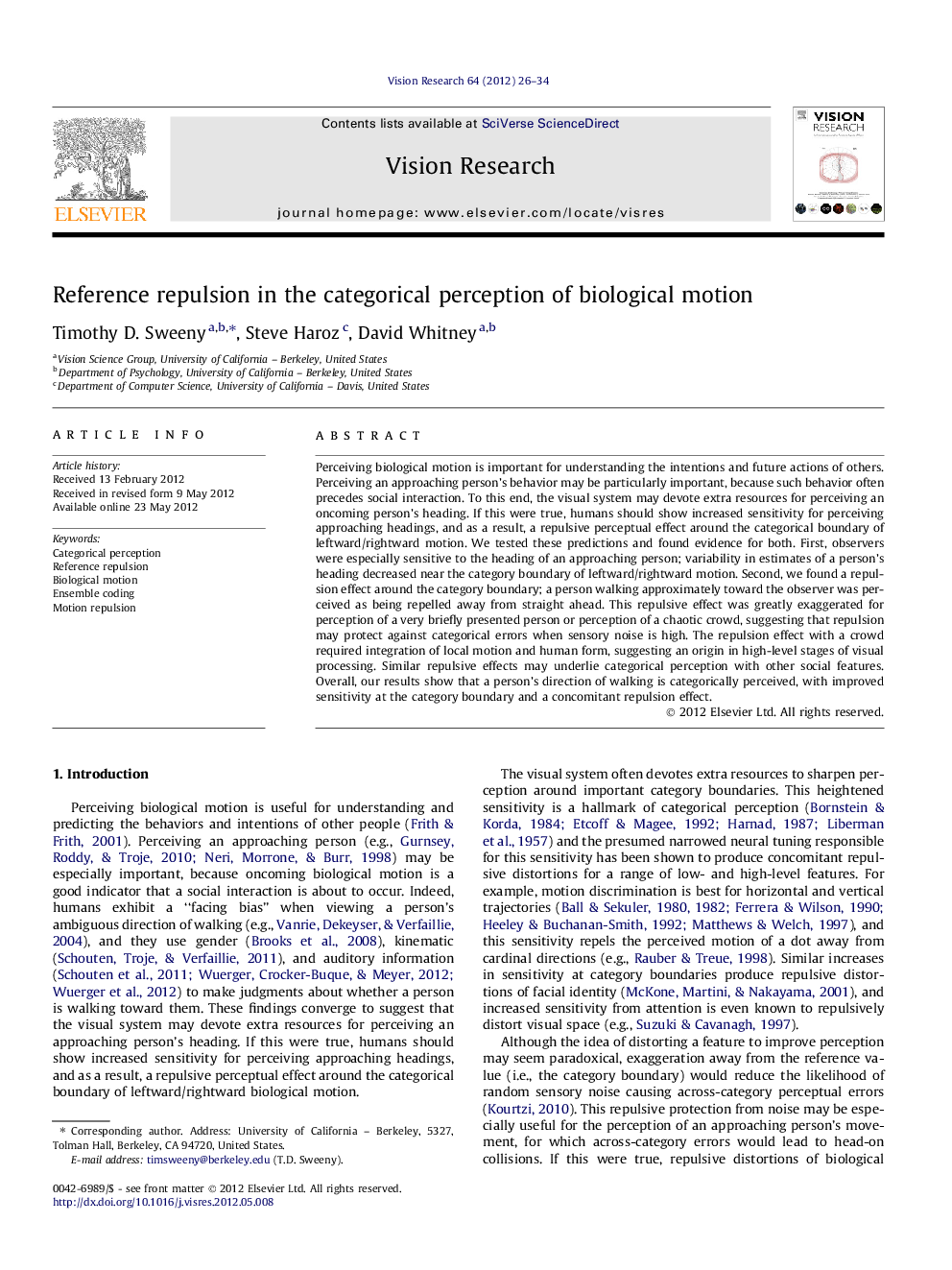| Article ID | Journal | Published Year | Pages | File Type |
|---|---|---|---|---|
| 4033948 | Vision Research | 2012 | 9 Pages |
Perceiving biological motion is important for understanding the intentions and future actions of others. Perceiving an approaching person’s behavior may be particularly important, because such behavior often precedes social interaction. To this end, the visual system may devote extra resources for perceiving an oncoming person’s heading. If this were true, humans should show increased sensitivity for perceiving approaching headings, and as a result, a repulsive perceptual effect around the categorical boundary of leftward/rightward motion. We tested these predictions and found evidence for both. First, observers were especially sensitive to the heading of an approaching person; variability in estimates of a person’s heading decreased near the category boundary of leftward/rightward motion. Second, we found a repulsion effect around the category boundary; a person walking approximately toward the observer was perceived as being repelled away from straight ahead. This repulsive effect was greatly exaggerated for perception of a very briefly presented person or perception of a chaotic crowd, suggesting that repulsion may protect against categorical errors when sensory noise is high. The repulsion effect with a crowd required integration of local motion and human form, suggesting an origin in high-level stages of visual processing. Similar repulsive effects may underlie categorical perception with other social features. Overall, our results show that a person’s direction of walking is categorically perceived, with improved sensitivity at the category boundary and a concomitant repulsion effect.
► Humans are especially sensitive to an approaching person’s direction of walking. ► This sensitivity underlies repulsive categorical perception of biological motion. ► Sensitivity and repulsion effects are exaggerated when sensory noise is high. ► Categorical perception of biological motion is important for social interaction.
